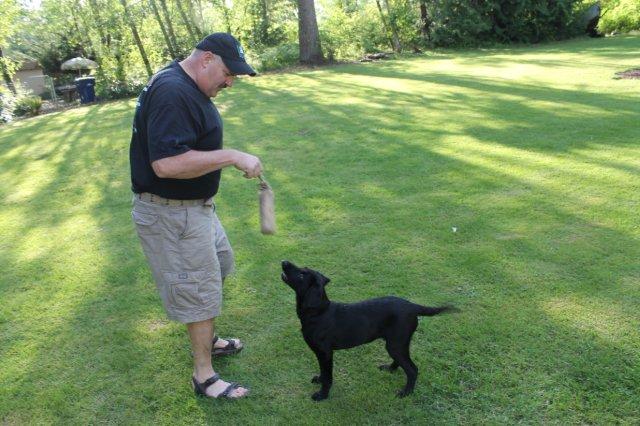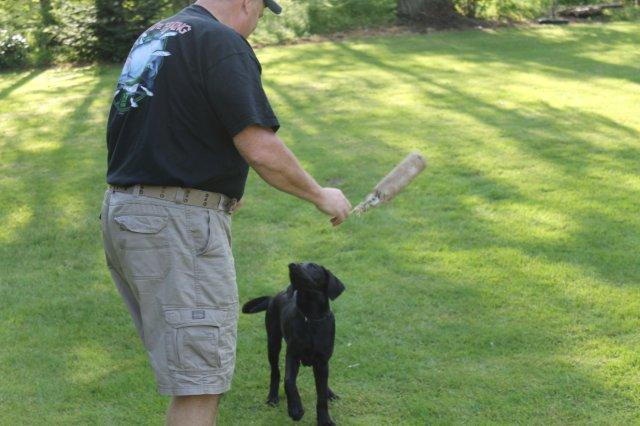Dog Blog Leave a reply
It was a journey to get through the passing of our last dog. “Jesse” was a family member in every sense of the word and putting her down was one of the toughest days in my life.
There is only one cure for the passing of an old friend.
Meet Bailey the bad dog…
I won’t bore you with too many details but suffice it to say that I’m a dog person and I grew up bird hunting with family and friends. For most of my life I’ve owned dogs and had a hand -at the least- in their training. For the outdoorsman, there is little more satisfying than training a willing pup, watching their development into adulthood and sharing in their first hunt, their first experiences with live birds.
Since we started The Outdoor Line, it became apparent to us that we’ve got an unprecedented opportunity with this pup, to bring a variety of training experts and gun dog writers in on the project in hopes of producing a solid hunting companion and sharing Bailey’s progress in words and pictures here.
I’m a fan and devotee of Richard Wolters excellent book “Game Dog” and if you’re familiar with the work, you’ll see much that is familiar here. The “dividing line” between the basic commands (Sit, Stay & Come) and more advanced work (Heel, hand signals and blind retrieves) is generally considered to be 20 weeks in most working or in this case retrieving breeds.

The retrieving dummy (what I'm holding, not me...) is to be used only for training. Chew toys, squeeks and bones are fine but unless you like your birds shredded, Don't play tug-of-war with the training dummy. The dummy is for serious (but not too serious) business.
Keeping the pup’s enthusiasm is key! When they stop sprinting to the retrieve, stop, praise and retreat!

Keep it playful and tease your pupil to pique their interest. Avoid burnout at all costs! Ten minute sessions a couple of times a day is plenty!

Ideally, you want to see the pup goin' all out after a retrieve but settle for cheerful completion. Every pup is an individual and if you switch training locations, do not be surprised if you have to start from ground zero. Playing fetch in the backyard when it's just the two of you is a different ballgame that going to a public park with distractions. Patience and encouragement is the key!

A sight to warm the heart of any prospective trainer... Your pup trotting back with a mouthful of training dummy!

Encourage, clap, cajole... anything to communicate that bringing that dummy back to you is the best idea since sliced bread!

Praise is the name of the game! Make a huge fuss when pup delivers to your hand. It's just what you want, unless you enjoy chasing winged birds that sprint as soon as the dog lets them go short of your grasp...
The successful backyard retrieve is an important building block to training the well-behaved retriever. No one wants to share a day afield with a dog that thinks he is the boss and requires “training” during the hunt.
In this blog series, we’ll introduce Bailey to water, hand signals, blind and double blind retrieves and eventually live birds. I hope you’ll follow our progress as trainer,… and trainee.
Tom Nelson The Outdoor Line 710 ESPN Seattle www.theoutdoorline.com


